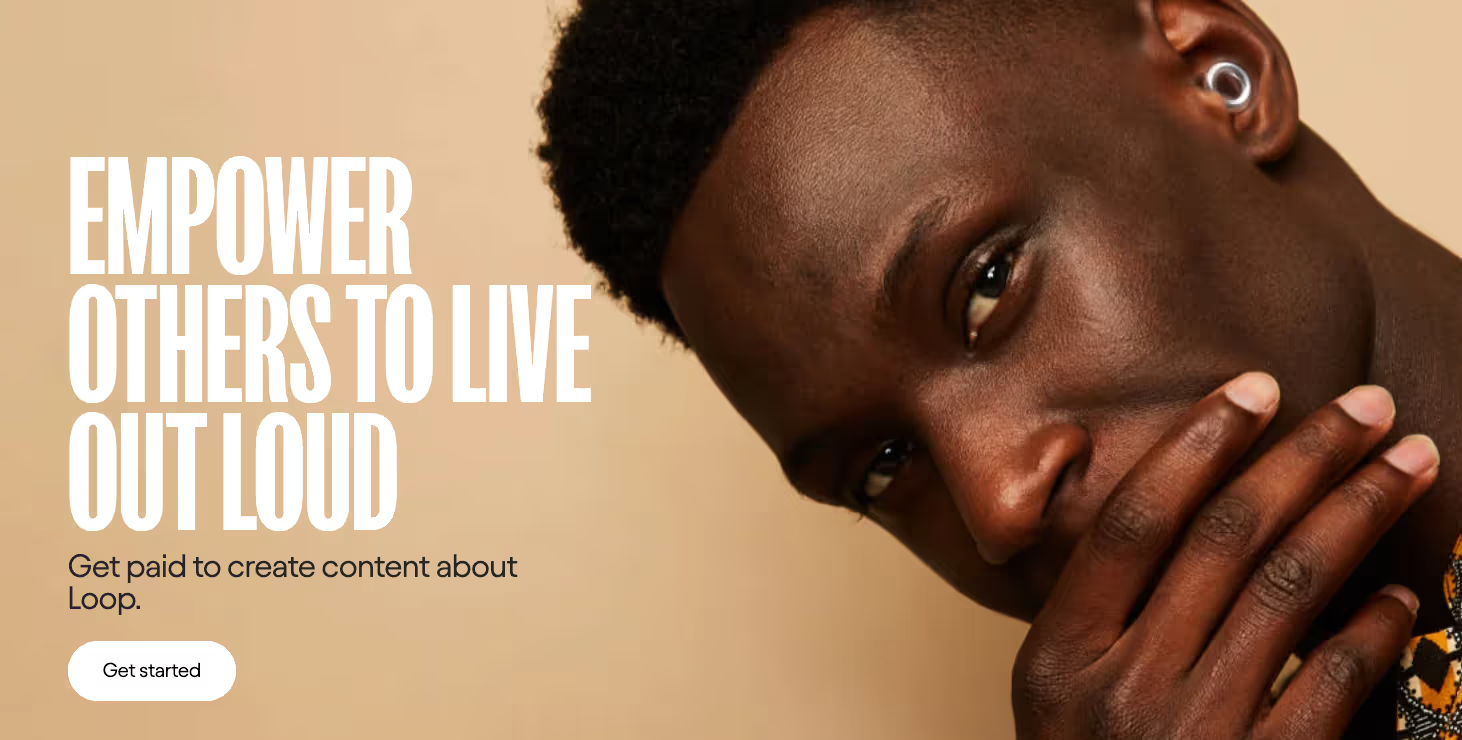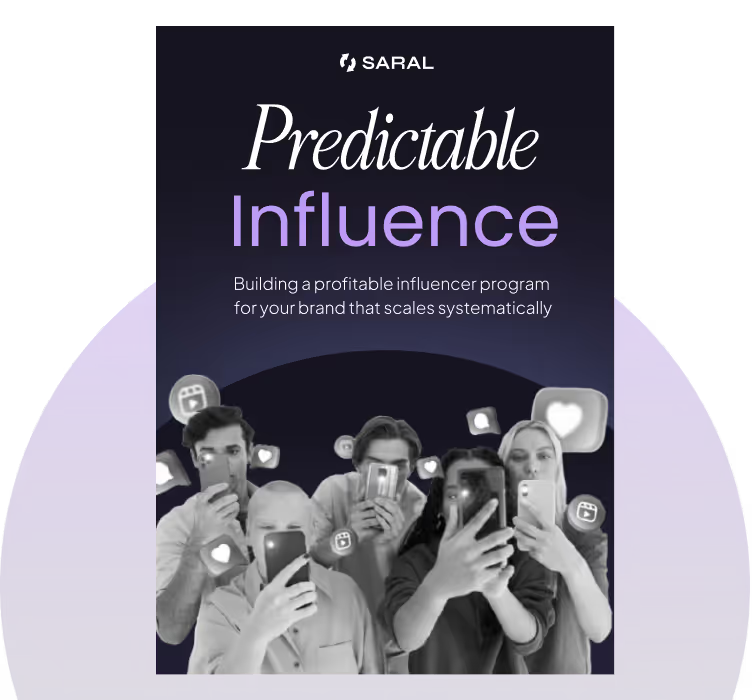Ready to drive incremental growth with influencers?
If ditching the randomness of influencer campaigns and building a predictable, ROI-first influencer program sounds like a plan. Consider talking to our team!

Finding Influencers
Discover 10 free and paid ways to find the perfect influencer for your brand. Boost reach, engagement, and growth with the right partnerships.
Contents
The success of your influencer marketing campaigns depends on the influencers that you collaborate with to promote your product.
But finding influencers is not an easy task.
In this blog, we've put together a list of the top 10 ways to find influencers ranked from free to paid. Some of these ways won't cost you anything, while others might require some investment.
An influencer is someone who has built a loyal social media following and can shape opinions or purchasing decisions. They help brands connect with consumers by sharing authentic, engaging content. In marketing, influencers act as trusted voices, making promotions feel more organic and relatable.
The right choice depends on your brand’s goals, audience, and budget.
Choosing the right influencer depends on your brand’s goals, reach, and budget. Influencers fall into four main categories, each offering distinct benefits.
These are celebrities or well-known figures with massive reach but lower engagement. Best for large-scale brand awareness but costly and less personal.
Well-established creators with niche authority. They balance reach and engagement, making them ideal for broad exposure without celebrity-level costs.
Micro-Influencers have highly engaged audiences with strong community trust. Perfect for brands seeking authenticity, credibility, and higher conversion rates.
Nano-influencers have small, close-knit followings with deep trust. Best for hyper-local or niche campaigns, offering cost-effective, high-engagement collaborations.
One of the most effective ways to find influencers is by analyzing your competitors’ partnerships. If an influencer has already worked with brands similar to yours, they likely have an engaged audience within your niche.
Engaging influencers who have previously worked with your competitors can provide insight into their effectiveness and audience alignment.
Pros:
Cons:
Social media listening tools like Brandwatch, Sprout Social, and Hootsuite can help brands identify influencers actively discussing their industry. These tools allow you to:
Pros:
Cons:
While social media is a primary source for influencer discovery, search engines and blogs can uncover influencers creating in-depth content. To leverage this:
Pros:
Cons:
Finding the right influencers requires using platform-specific strategies tailored to how creators engage and grow their audiences on each network. Here’s how to search for influencers effectively on YouTube, Instagram, TikTok, and Facebook.
Pros:
Cons:
One of the simplest ways to find influencers for your brand is by looking at your customer list. If people are buying your products, they already like what you offer. Some of them might even have a following on social media or a platform where they share their thoughts.
Their endorsements come from personal experience, making them more authentic and trustworthy.
A prime example of this method in action is Athletic Greens. In the Leveling Up podcast with Eric Siu, COO Kat Cole revealed that they only partner with creators who are already customers.
Dr. Andrew Huberman, a host of the Huberman Lab Podcast, is a customer who praises Athletic Greens for its simple way to get essential nutrients. Even Tim Ferris, who recommended Athletic Greens in his book "The 4-Hour Body," was never paid for his endorsement.

This adds a layer of credibility, making it clear that the recommendations are real, not "just another paid promotion."
If your product serves a very specific segment of the market or has unique features, finding influencers from your customer base ensures that the promoters truly understand and appreciate what makes your product special.
Brands that have a subscription model might find this strategy effective, as their customers likely have ongoing, positive experiences with the product. Their long-term engagement might translate into more authentic influencer UGC.
This method will work on a social media platform where influencers use hashtags regularly and abundantly.
By following this method, you can find at least 50 relevant hashtags in just 15-20 minutes, opening up potential connections with thousands of influencers who can promote the brand regularly.
Put all hashtags into a “Mega List”. For each hashtag now you just have to find 20-30 influencers to have thousands of influencers to reach out to.
Here's a video to walk you through this method:
To use this method, you'll need our influencer hashtag research spreadsheet (make a copy).
At the end of this process when you want to analyze any influencer's profile, you can use SARAL's free Chrome extension to learn more about them.
Just click the extension icon, and you'll see metrics of any influencer that helps you decide if you want to contact them or not.

You can even save influencers in SARAL and email them straight from the platform, without any extra tool.
Try SARAL for yourself and see how it can make your influencer marketing better.
Pros:
Cons:
An ambassador program is where a brand recruits individuals, often customers or fans, to represent and promote their products or services.
These brand ambassadors share the brand's values and are enthusiastic about spreading the word. They may receive incentives like discounts, free products, or affiliate commissions in return for their promotional efforts.
Such programs provide a formalized way to build and maintain relationships with influencers. It sets clear expectations, roles, and rewards, creating a long-term relationship rather than a simple transaction.
Brands like Pura Vida and Loop Earplugs have successfully used this method to engage with the right influencers to promote their brand.

They have dedicated landing pages for ambassador programs. Here they talk about who they're looking for as their ambassador, what are the incentives and perks for prompting their product and finally invite them to apply.

But creating an ambassador program is not enough. You have to make sure enough people know about it.
Here's how to promote your ambassador program:

In this method, the initial fixed costs you'll incur are — building the landing page, & hosting it. Then there might be variable costs involved in promoting the program in case you use ads.
Pros:
Cons:
Researching and finding influencers can take hours if you're doing it at a high volume. Your time is better spent building relationships with customers or influencers.
That's where a VA (virtual assistant) or freelancer or even an AI agent can take this off your plate, letting you concentrate on other critical tasks.
Before you onboard someone to assist with finding influencers, you must have a clear process in place. You are the expert in knowing what your brand needs and you should be the one to define the requirements, goals, and methods for selecting influencers.
Platforms like Upwork are excellent places to find professionals who specialize in social media lead-generation tasks. Rates vary, but a budget of $50 to $65 for 100 influencers can offer a cost-effective solution.
Pros:
Cons:
Using SARAL you can find any type of influencer for your brand from any geography.
… without spending hours copy-pasting data into spreadsheets or combing through social media accounts that are not even relevant to you.
SARAL can replace expensive or inefficient databases out there. That's because it's a search engine that allows you to find any influencer on social media!

It costs a fraction of how much time you'd spend doing this manually or paying for VA hours. Here are the pricing details. There is a free trial so you can test before you commit!
Pros:
Cons:
On a serious note…
Influencer marketplaces are platforms where brands can connect with influencers who are open to collaboration.
These marketplaces host a database that includes creators with a modest number of followers to well-known celebrities who have earned millions of followers on social media platforms.
Such marketplaces include — Billo, Insense, and more…
Influencer marketplaces can be an attractive option for brands looking to find influencers fast, but the costs associated with these platforms can be substantial. Plus, you're not going to be able to find very many untapped creators.
Most marketplaces will charge transaction fees for each successful collaboration with an influencer. These fees can add up, especially for brands that engage with multiple influencers through the platform.
We don't recommend this route for DTC brands. Especially when you have tools like SARAL!
Effective influencer outreach goes beyond just sending a message—it’s about creating genuine connections that lead to meaningful, long-term partnerships.
You can create an availability poll by using meeting scheduling tools to determine their availability for a meeting. This is a good move in building a strong relationship with them.
Before reaching out with a pitch, establish a presence and familiarity with the influencer. Here’s how:
Once initial engagement is established, a compelling proposal can increase the chances of collaboration. Key elements to include:
Rather than treating influencer collaborations as one-time transactions, prioritize lasting partnerships.
By fostering long-term influencer relationships, brands can expand their reach, boost credibility, and build authentic customer connections.
Choosing the right influencer for your brand goes beyond follower count. It’s essential to assess their content quality, audience engagement, and overall credibility to ensure a successful partnership.
Before collaborating, review the influencer’s content to determine if it aligns with your brand’s values and messaging. Consider the following:
A strong content match ensures that influencer collaborations feel authentic and natural to their audience.
Engagement is more important than follower count. Here’s how to assess an influencer’s audience:
Working with an influencer with a positive reputation ensures brand safety. Before reaching out, research:
By thoroughly vetting influencers, brands can build strong, credible partnerships that drive real impact.
While starting with free methods can seem appealing, it's essential to weigh the potential long-term costs and lost sales against the benefits.
Free methods don't provide the necessary tools or reach to effectively find and reach your best influencers.
Every moment spent on less effective marketing strategies represents a lost opportunity to capitalize on more robust solutions. The use of free methods can keep your brand from reaching its full potential, negatively impacting growth and profitability.
So despite the perception that going with free methods is always the best option, using a platform like SARAL might prove to be a smarter investment in the long run.
.avif)
SARAL is an all-in-one influencer marketing platform excels at what matters most:
...and so much more so you can focus on things that can't be automated, like building relationships.

Sign up for a 7-day email course on the unique "Predictable Influence" strategy used by top brands like Grüns, Obvi, Tabs Chocolate.

Jump into our email course and master the basics of building an influencer marketing program. It’s everything you need to start strong.

If ditching the randomness of influencer campaigns and building a predictable, ROI-first influencer program sounds like a plan. Consider talking to our team!